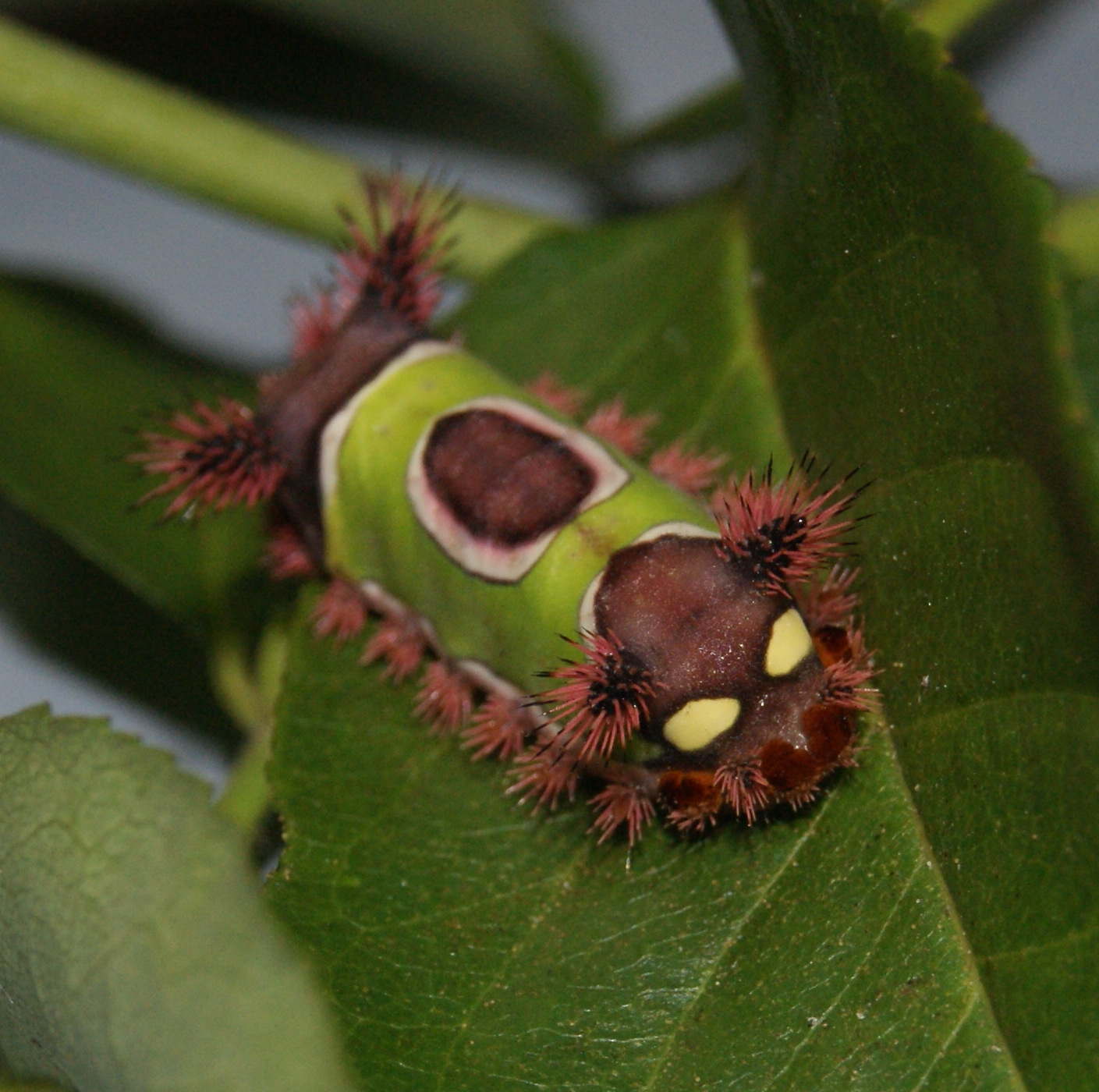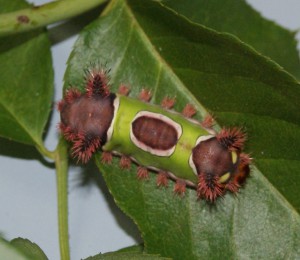In Florida, there are a dizzying array of caterpillars that turn into beautiful or interesting moths or butterflies. Most are harmless except to the plants they munch on. There are a few that will cause humans pain if they are handled or touched. One of these venomous caterpillars is called the Saddleback, which is native throughout the eastern United States and is found throughout Florida home gardens. Many caterpillars only feed on specific and limited species of plants. The Saddleback caterpillar, Acharia stimulea, can be found anywhere in the home garden because it eats a wide variety of plants.
This caterpillar is quite a bit shorter than other Lepidoptera and has brown ends covered with venomous spines. The central portion of the body is bright green with a brown dot in the center. The spines on the front and back of the caterpillar are hollow and can break off and embed in the skin when disturbed. They contain hemolytic and vesicating venom, which cause burning sensations on and reddening of the skin; later sweating and blistering. Spines should be removed promptly before any other treatment methods are applied.
The best strategy for managing this insect is prevention of sting. If working in the yard in dense growth where these might not be easily observed, wear gloves and long sleeves. They are not aggressive and very slow moving, so they are easily avoided. Since they are seldom present in large numbers, the preferred method of control is removal from plants with forceps. Registered insecticides, such as those containing Bt (Bacillus thuringiensis), are effective controls of this insect.
Below is a partial list of host plants, most of which are commonly found in Northwest Florida gardens (EENY 552 excerpt):
- Acer spp., maple
- Viburnum spp.
- Ilex cornuta, holly
- Several palm species
- Aster spp.; Helianthus spp., sunflower and artichoke
- Cornus spp., dogwood
- Cycas revoluta, cycad, sago ‘palm’
- Vaccinium spp., blueberry, cranberry, huckleberry
- Wisteria spp.
- Castanea spp., chestnut; Quercus spp., oak
- Hydrangea spp.
- Gladiolus spp.
- Carya illinoinensis, pecan
- Lagerstroemia indica, crape myrtle
- Hibiscus rosa-sinensis, Chinese hibiscus; H. syriacus, rose of Sharon; Malvaviscus spp., wax mallow; Tilia spp., basswood
- Zea mays, sweet corn
- Eriobotrya japonica, loquat; Malus pumila, common apple; M. sylvestris, crabapple; Photinia spp.; Prunus serotina, black cherry; Pyrus spp., pear; Rosa spp., rose
- Coffea arabica, mountain coffee; Gardenia spp.; Ixora coccinea, jungle geranium
- Citrus aurantium, bitter orange; C. limonia, rangpur; C. paradisi, grapefruit; C. sinensis, sweet orange; Fortunella spp., kumquat
- Ulmus spp., elm
- Vitis spp. grapevine
For more information, please consult with publication # EENY 552 “Saddleback Caterpillar Acharia stimulea” or your local extension office.
- Woodland Pinkroot Adds Vibrant Color to Spring Landscapes - April 27, 2023
- Easy Care Roses for the Gulf South - April 20, 2023
- Herb Gardening: When Oregano is Flavorless - March 9, 2023


